DEMONSTRATION
TRANSPARENT FABRIC
Among the glitz and glam, there’s room for fabrics that won’t appear in settings that are based in practicality. Flimsy, transparent materials are the perfect illustration of style over substance.
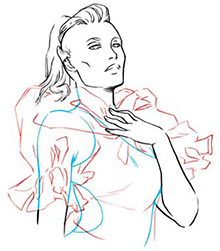
1 OUTLINE YOUR FABRIC
Outline your fabric to show where it will fall in relation to the body. The red lines here show the fabric, and the blue lines show what parts of the body lie beneath it. In this example, the material is stiff and holds its own shape, so it isn’t clinging to her form.
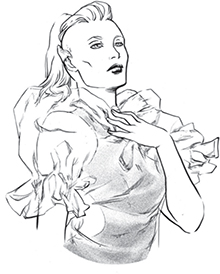
2 BLACK AND WHITE
In a pen-and-ink version, use a thinner line or a different pen with a finer point for the outline of the shirt. Also use a thinner line for the parts of the body visible through the shirt. In contrast, the ink lines on the rest of the body and face will be thicker. The difference in line width makes it appear as though the viewer is looking through sheer fabric.
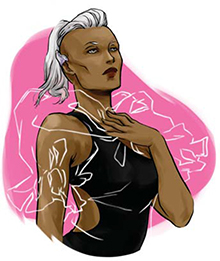
3 CHANGE THE OUTLINE
In a colored version, change the outline of the transparent material to white instead of black. This helps to lighten the cloth compared to the rest of the drawing, which still has the heavier black outline.
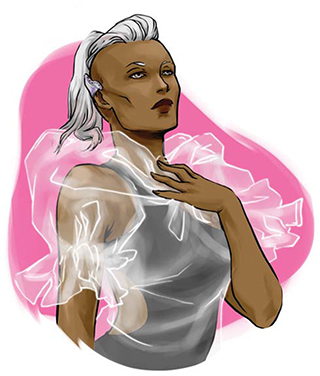
4 ADD WHITE
Add a light layer of white over the surface of the transparent fabric. The sections that cinch together or are flattened by her hand are more opaque. Since the fabric is gathered, there are more layers of it and it’s harder to see through.
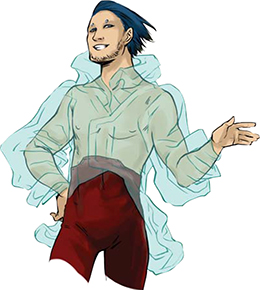
EXPERIMENT!
Transparent fabric can be used in almost any kind of garment regular fabric can. Try out a few designs and practice coloring them to get the feel for it.